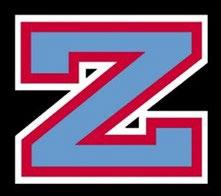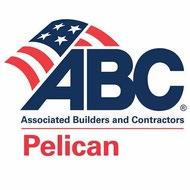







1. About the Greater Baton Rouge Industry Alliance, Inc.
2. Purpose of the Craft Workforce Development Awards
3. Workforce Timeline
4. Louisiana and the GBRIA Region Labor Forecast
5. Value of Benchmarking Program
6. 2024 Award Recipients
7. Awards Program Methodology
8. Benchmarking Results
a. Respondents
b. High School Benchmarking Results
c. Post-Secondary Benchmarking Results
d. Contractor Benchmarking Results
i. Program Documentation and Management Commitment
ii. Workforce Development Metrics
iii. Recruitment
iv. Assessment
v. Training
vi. Career Path Development
vii. Retention
9. Conclusions
10. Contact Information


The Greater Baton Rouge Industry Alliance, Inc. (GBRIA) is a trade association, 501(c)(6) non-profit organization, whose membership includes 76 industrial plant facilities spanning the Mississippi River industrial corridor, from Baton Rouge to New Orleans. Its membership is comprised of manufacturers in petrochemical, paper, bulk storage, and other industries. The mission of the organization is to bring value to communities by developing innovative solutions to common industry issues advocated with one voice.
The GBRIA Workforce Development Committee is led by GBRA Board of Director members
Rafael Gonzalez , Director of Chemical Plant Operations at Honeywell-Baton Rouge, Theo Webre, Senior Engineering and Maintenance Director at Dow, and Steve Welch, Plant Manager, OxyChem Convent.
Committee Members:
Jeff Blohm, ExxonMobil
Ayanna Burton, Nucor
Corey Callegan, Shintech
Jeff Carkuff, Westlake
Peyton Chiasson, OxyChem
Tricia Delatin, Syensqo
Buck Dingler, SNF Flopam
Truth Garrett, Marathon
Sarah Haneline, BASF
Mark Morvant, Shell
Chad Naquin, Olin
Carl Raymond, ExxonMobil
Baraynia Robillard, ExxonMobil
La’Shantena “Tee” Rounds, Nucor
Alan Smith, BASF
Jason Zeringue, Dow
Allison Zinskie, PBF Energy
Awards Judges:
Jeff Carkuff, Westlake
Peyton Chiasson, OxyChem
Buck Dingler, SNF Flopam
Cameron Falgoust, Rubicon
Tressa Fuller, Rubicon
Rafael Gonzalez, Honeywell
Sarah Haneline, BASF
Steve Ledoux, Orbital Engineering
Charles Nailor, Americas Styrenics
Arthur Pennison, Westlake
Adam Rabalais, Westlake
Ebonie Raby, Nutrien
Febbe Robertson, Orbia
Baraynia Robillard, ExxonMobil
Alan Smith, BASF
Sam Streacker, Marathon
Jake Valenti, OxyChem
Rachel Vincent, Methanex
Steve Welch, OxyChem
Jason Zeringue, Dow


The purpose of the GBRIA Craft Workforce Development Awards Program is to recognize workforce development efforts of individual firms and educational institutions that prepare the current and future workforce.
The awards program for contractors conveys GBRIA’s strong support for improving craft workforce development performance and acknowledging the overall importance of contractors as an extension of a plant’s workforce.
The awards program for high schools and post-secondary institutions provides a way for industry and educational institutions to gain valuable insights into each others’ needs and expectations and conveys the quality of programs and curricula used to educate students.
This benchmarking report encompasses data collected during the awards submission process and presentations. GBRIA member facilities encouraged each other and their contractors to invest in comprehensive workforce development programs that address recruitment, assessment, training, career path development, and retention in the workplace and career path.
Participation in the awards program is a strong indicator of an organization’s leadership and commitment to the goals of workforce development, whether it be a plant, contractor or educational institution. GBRIA and its members thank each nominee for participating in this year’s event. The awards and benchmarking program entered its 17th year in 2024.



A large portion of the workforce in the region will retire within the next 5-10 years. This means that attracting and educating skilled crafts people is an urgent need.

Engineering/PM Disciplines (Retirement Age 64)
Industrial Craft Disciplines (Retirement Age 61)



The following graphs show very strong investment interest in Louisiana. Mega projects are those that plan to spend at least $1 Billion or more. Many of the newest projects being planned are to meet the need for carbon sequestration and sustainable energy solutions. Continued strong investments are due to the low price of natural gas. Louisiana has been a globally competitive place to invest in since fracking technology improved in the early 2000’s.
Project labor demand is driven by the capital investment required to develop a mega project. From the total cost, materials and labor are segmented, with demand shaped by the combined need for direct hires, indirect staff, and contractors during peak construction, as well as the essential personnel to maintain the facilities once operational.

Mega Projects Mega Projects w/o Projects on Hold LA Industrial BLS Supply



In the GBRIA region, between Baton Rouge and New Orleans, the data show a similar pattern to the mega projects statewide. The following graph shows that the number of people needed (headcount) increases steadily until late 2026 and then drops off. The drop is mainly due to a lack of information in dates further out. By all indications, the increased level of needs may continue for several years beyond 2027. A key observation from this chart is the fact that the supply of skilled workers falls significantly short of the demand. The supply data is derived from the Bureau of Labor Statistics' records of individuals currently employed in craft disciplines. However, the data may be limited due to the broad categorization by sector and industry subsets. Consequently, the supply headcount may be underestimated.
Despite supply data accuracy, the gap between the supply and demand for craft professionals is a major concern. Industrial project construction companies will need to source labor for these projects from out-of-state unless more people in Louisiana gain the skills necessary to join the industrial construction workforce. For this reason, GBRIA engages in numerous programs, works with many partners, and hosts the Craft Workforce Development Awards program to attract, educate, and place new workers in the industry.



The GBRIA Craft Workforce Development Awards Program and Benchmarking Survey not only serves as a means of recognition for nominees, but also, to gain valuable insights into education and workforce trends. The following results were compiled from the applications of the nominees and provide a means to understand how schools and contract companies’ workforce development programs measure up to industry expectations. In addition, the results will be used by GBRIA and its members to help guide efforts to improve workforce development for skilled crafts people.
High Schools:
Award of Recognition:
• Brusly High School | WBR Career Academy
Award of Merit:
• East Ascension High School
• False River Academy
• French Settlement High School
• Joseph A. Cullier Career Center
• Northeast High School
• Zachary High School
Award of Excellence:
• East Baton Rouge Career and Technical Education Center (CTEC)
• Live Oak High School
• St. Amant High School
• Walker High School
• West Feliciana High School


Post-Secondary Institutions:
Award of Merit:
• Louisiana State University (LSU) Online & Continuing Education
Award of Excellence:
• Associated Builders and Contractors (ABC), Pelican Chapter
• Alliance Safety Council
• Baton Rouge Community College
• River Parishes Community College
Industrial Contractors:
General Construction & Maintenance:
Award of Recognition:
• Action Industries
Award of Merit:
• Brown & Root Industrial Services
• Cajun Industries
• CAM Industrial Solutions
• Turner Industries Group
Award of Excellence:
• EXCEL
• Performance Contractors


Specialty Hard Crafts:
Award of Merit:
• MMR
• Westgate
Award of Excellence:
• Triad Electric and Controls
• ISC Constructors
Specialty Trade Crafts:
Award of Recognition:
• BrandSafway
• Deep South Crane and Rigging
• Total Safety
Award of Merit:
• Brock Services
• Precision Inspection Services
Award of Excellence:
• PALA Group
• Turner Specialty Services


Post Secondary & Contractor

Nominations Close April 26th


Nominations Open March 27th
Applications Due June 7th

High School
Nominations Due May 24th
Awards Selection Meeting July 24th


Judging Period June 17th - July 17th
Nominations opened on March 27th and closed on April 26th. Applications from nominated high schools were collected until May 14th while the submission window for post-secondary schools and contractor were open until June 7th. Nominees submitted applications provided statistics and documents related to their workforce development program. Additionally, high school nominees presented their programs in person, while post-secondary and contractor nominees recorded their presentations. The judging panel scored the applications based on a committee developed scoring rubric. Scores were submitted using an online form, where scores for each nominee were averaged and initial placements were made. On July 24th , the judging panel met to review the initial placements and agreed on final award placements.
Contractor nominees were divided into three categories: “General Construction & Maintenance”, “Specialty Trades Hard Craft”, and “Specialty Trade Contractors”.
Post-Secondary nominees were divided into two categories: “Technical Education” and “Continuing Education”.
High school nominees were considered as one category.
Details, terms, and definitions used for the application, benchmarking report and scoring can be found in Appendix A.


The 2024 Craft Workforce Development Awards Benchmarking Report is created from responses by the high schools, post-secondary institutions, and contract companies who participated in the program.
The contractor benchmarking results are based on the corporate data from the following companies. The high schools participating were listed above.















Post-Secondary Respondents:


Contractor Respondents:























The following key insights were gained from the high school data submitted.


(Based on all high school respondents)
22% of the total student body is enrolled in a craft course.
22% With an average class capacity of still yet to be filled.
67% attended ABC’s Build Your Future Event of respondents


11,536 Total Number of Students 12 High School Programs Students Enrolled in Craft Programs 2,536 Top 5 Craft Programs students are enrolled in:






Students who enrolled in craft courses completed the course and received Industry Based Certifications (IBC) 100%

5
Post-Secondary Institutions








2023 Enrollment: for Craft Courses 3,580 3,099 Spring 2024 Enrollment: for Craft Courses 62% Course Completion Percentage for Fall 2023 71% Course Completion Percentage for Spring 2024
38% Percentage of students that earned IBCs in Fall 2023
26% Percentage of students that earned IBCs in Spring 2024
*IBC – Industry Based Certifications*

37,489
Completed BOP or Safety Awareness Training in Fall 2023

39,908
Completed BOP or Safety Awareness Training in Spring 2024



17
Contractor Companies

75,279,046
Total Hours Worked

101,217
Total Number of Employees
i. Program Documentation and Management Commitment
The first section of the application reviewed each company’s documentation and management commitment processes. Companies were asked to upload a copy of their formal workforce development program, if available. The committee reviewed the supplied documents looking for inclusion of elements that describe the company’s workforce development goals and objectives, supervisor responsibilities and expectations, record keeping systems, and designated workforce development staff. One hundred percent of participating nominees provided GBRIA with a Workforce Development document for review.
A strategic objective of GBRIA’s workforce development efforts is the development of an affordable, available, and skilled craft workforce. GBRIA members contribute 7 cents per skilled contract work hour worked at member sites to subsidize training costs at the ABC Pelican Craft Training Center. Contractors also make significant contributions of money and equipment not only to ABC’s Craft Training Center but also to many other educational institutions in the state to support craft training. Workforce development, like safety, is beneficial for both employers and individual workers. According to a 2007 report by the Construction Industry Institute (CII), craft workers achieving NCCER written certification typically receive an additional $1/hour, while those achieving performance certification receive another additional $1/hour or $4,160 per year for a person working at least 40 hours per week.



(Based on all contractor respondents)




Serve on a Workforce Development Committee
Companies seeking to reap these benefits must take employee feedback into account when creating their programs. Proper employee feedback systems should allow companies to evaluate the strengths and weaknesses of their current workforce development efforts and make changes to maximize their effectiveness. Companies scoring highest in this section provided sample employee surveys and described how often and when these types of surveys are conducted and how follow-up action is implemented.
Participation in associations also served as a method for GBRIA’s evaluation of companies’

Have a Formal Written Workforce Development Program
Companies that participated in Workforce Development Events in 2023




This section covers questions relating to the recruitment of crafts in the last calendar year. The recruitment process includes defining a job, attracting interest, screening applicants, hiring, and integrating a new employee. Workforce development in terms of recruitment is making this process faster and cheaper without compromising the quality of the employees hired.
The existence of a formal process for recruiting new workers can serve as a sign of a company’s commitment to workforce development. Companies were asked to provide documents of their recruitment process. The committee reviewed these documents looking for inclusion of elements such as partnerships with area high schools or community and technical colleges; participation in career days or job fairs; internship or co-op programs; scholarship or reimbursement programs; tool and equipment purchase programs and programs accommodating women and minorities in the workforce
94% offer internal craft training via job site or a owned of respondents
Companies that attend at least one job fair in Louisiana in 2023

100% offer financial assistance for tuition or fees. of respondents

100% offer paid training or certification time. of respondents


This section covers the 2023 activities related to assessing the skills of craft professionals. The assessment process involves evaluating an employee’s skills, documenting results, and providing feedback for improvement; aiming to make the process faster, cheaper, more accurate, and more productive.
Having a formal process for evaluating new workers' skills demonstrates a company’s commitment to workforce development. Top companies have strong assessment programs for both new hires and current employees advancing in their careers. The committee looked for how companies use assessments to assign skill levels and whether they consider the worker’s history, training, and experience. Additionally, they examined whether companies use both written and hands-on assessments and how they address skill deficiencies.
Of the companies surveyed, the training and/or full assessment period can last anywhere between several hours and several months depending on the scope that services require for the role.
of respondents 100% have a formal process for skill and upgrade training for skill deficiencies.
Number College Partners
88% of respondents hold formal performance evaluations of craft employees.


Training is the broad process of equipping employees with knowledge and skills to improve their work performance. All companies indicated that their program encourages employee access to formal craft training and facilitates access to certifications.
Employer encouragement often comes in financial form, since paying for training is usually the main obstacle for hopeful entrants to the industry as well as for existing employees. Employers often allow for paid training time, but the most common scenario is that employers reimburse the cost of the courses. According to the survey results, most respondents offer financial assistance for employees’ formal training.
Employees are still likely to need a wide array of skills outside of their craft specialization to be effective in the workplace. The results above indicate that Ninety-four percent of participants’ training programs include Supervisory Development training for supervisors. Along with these general leadership skills, supervisors also require some more technical skills to effectively coordinate other workers.

41% Was the average number of craft professionals who’ve earned the highest certification level in their respective crafts.
(Based on 15 out of 17 respondents)
28% was the average percentage of U.S. based workforce enrolled in craft training for 2023.
(Based on 15 out of 17 respondents)
76% utilize skill training beyond NCCER for more advanced crafts. of respondents
The most common answer for identifying skill deficiencies was based on
For those enrolled in 2023 59% was the average completion percentage for craft training. Supervisor’s Recommendations


Career Path Development is the process of providing and communicating opportunities for employee advancement. Workforce development entails the creation of more opportunities and more effective communication of these opportunities. This section asked participating companies to provide their formal, written career path. Committee members looked for whether these career path documents described possibilities for advancement of employees; training requirements for advancement; and how employees can move into diverse areas of construction or management.
The opportunity to begin and excel in a career path is a key motivator for all craft professionals. One of the industry's biggest advantages is the ability to begin with minimal costs and receive on-the-job training. Survey results show that more companies are now training and developing new hires with the goal of promoting them to management roles to ensure quality work for the next generation. It's crucial now more than ever for companies to hire, develop, and promote personnel to meet growing industrial demand.
94% of respondents have a formal career path program to inform employees of career opportunities.
94% of respondents require completion of leadership training to qualify for a supervisor role.
88% of respondents utilize in-house leadership training.
Ratio of Employee Taught Craft Trainings 6 : 1


Retention is the process of maintaining a work environment that encourages current employees to remain with the company. Committee members reviewed company-provided retention program documentation. Judges reviewed elements of nominee's retention practices and descriptions of how companies facilitate continuous employment to employees between projects.
Partner with Technical Colleges

among respondents
(16 out of the 17 respondents)

Facilitate continuous employment for craft professionals between projects
Is your company working with or anticipating that you will work with the Inflation Reduction Act (IRA) apprenticeship program for projects in LA?

Avg. Number College Partners

Was the average percentage of employees who are continuously employed
(Based on the 14 of the 16 respondents who said “Yes” to continuous employment of craft professionals)
For those that answer "Yes", here's the breakdown our where the IRA program is being developed.






Retention
Contractor nominees were asked what criteria is used during performance evaluations for craft professionals. Through their presentations, participants included the following elements used to assess employees:
• Abilities
• Attendance
• Attitude
• Dependability
• Initiative
• Judgement
• Knowledge
• Leadership
• Personal Habits
Quality of Work • Respect
• Responsibility • Safety
• Skills
• Teamwork
• Work Ethic
The table below highlights the most common assessment criteria.


Each year, GBRIA’s Workforce Development Committee analyzes and adjusts the criteria and processes around the Craft Workforce Development Awards Program. Changes to the program this year included a significant change to the program presentation model to allow judges more time to review submissions and to group similar trades within judging assignments for a more paralleled review. The committee's ongoing goal is to continuously review and adjust expectations and scoring to enhance the credibility of the awards program and to improve participating contractors’ performance of work at member sites.
When comparing year-over-year award placements, performance varies, however, overall effort in workforce development is trending upward. Nominees in all categories; high schools, post-secondary institutions, and contractors, showcased mature and sustainable results and are applauded for their efforts. GBRIA encourages continued collaboration between these three vital parts of the craft education ecosystem. Strength in these partnerships will continue to yield stronger educational programs and streamlined access to career onboarding and advancement.
As the demand for skilled craft professionals grow, the need to effectively recruit, train, and retain quality talent is paramount. The average age of a craft professional in Louisiana is 44 years old and the average retirement target for all craft professions is around 61 years old. It may take upwards of 10 years for a craft professional to reach the “seasoned professional” status highlighted in the training and attrition graph on page 5. This leaves a short window of opportunity to onboard and train a new workforce that can benefit from the historical knowledge of todays seasoned professional, before they retire.
GBRIA continues to drive and support efforts to increase awareness, understanding, availability, and desirability of our industry and craft careers, as we have for 54 years.


1. Accreditation – Refers to formal certification of curriculum, assessments, instructors, and proctors or evaluators for National Center for Construction Education and Research (NCCER) or other Department of Labor (DOL) approved training and assessment programs.
2. Applicable Work Hours – The hours worked by U.S. based employees in the reviewing year.
3. Approved Assessment and Verification Processes a) The approved programs for merit shop contractors are the NCCER written assessment and performance verification programs. b) The approved programs for union contractors are journey level achievement of union programs or NCCER. c) For crafts where there are no approved (NCCER) skill assessments and performance verifications yet available, documentation by the contractor on how worker skills are assessed is required or where there is an industry accepted assessment program other than NCCER or a union, that program is used.
NOTE: For assessments not yet developed by NCCER, it is expected that employees will be assessed within one year after the assessment becomes available. 1) Skills assessment results in a training prescription and upgrade training. 2) Skills assessments are intended for trained craft persons with typically 2 or more years of industrial experience in targeted craft. Workers with less than typically 2 years of industrial experience should be enrolled in an approved training program that will prepare them for certification.


4. Approved Craft Training – Defined as National Center for Construction Education and Research (NCCER) standardized craft training curriculum (a.k.a. Contren) or Department of Labor (DOL) Bureau of Apprenticeship Training program, or the certification process for welders per section IX of the ASME code (or other recognized standard), or specialty training and/or certification provided by other organizations including the employer of the craft person is acceptable when this type of training and/or certification is not provided by NCCER.
5. A Certified Craft Person in the Greater Baton Rouge area, as defined and agreed to jointly by GBRIA and the ABC Pelican Chapter is:
One who has relevant craft work experience as detailed in TABLE 1 and has been certified by one of the following processes:
NCCER Certified Plus
A. Met cut score on the written assessment in his or her craft
B. Successful completion of the performance verification OR
Certification process for welders per section IX of the ASME Code or other recognized industry standard OR
Specialty and union training and/or certification provided by other organizations including the employer of the craft person, is acceptable when this type of training and/or certification is not provided by NCCER (i.e., refractory worker, lineman, fiber optic technician, heavy equipment operator, etc.)


6. Certified Union Craft Person– defined as one who has reached Journeyman status.
7. Craft Person(s) – All construction, maintenance, and repair crafts. This includes laborers, helpers and working supervision.


8. Formal Training and Curriculum– Training and curriculum refers to either the National Center for Construction Education and Research (NCCER) or other industry recognized standard or other DOL approved craft training.
9. GBRIA/ABC Craft Training Partnership– When the ABC Pelican Chapter Training Center was built, industry leaders from GBRIA and contractors developed an informal agreement to pay for the school and its ongoing expenses. This agreement is still in place today
10. Number of Craft Persons– Average employment numbers for the past year; this could be the average of four quarterly measures for the past year. Numbers of field personnel includes supervision for total company and applies only to U. S. employees.
11. Past Year or Time Period for Evaluation– This evaluation covers January 2023December 2023.
12. Skills Upgrade Training– Accredited skills training that assessed craft persons take to upgrade skill deficiencies identified through skills assessments that will prepare them to retest for certification.
13. Trainees or Apprentices – Craft persons that are enrolled in craft skills training and have not completed a formal training program.
14. Uncertified Craft Person(s)– Craft persons that have completed a formal training program and/or have on-the-job training but have not achieved certified craft person status.


Brandon M. Smith
Director of Safety, Workforce Development, Ops Strategy
Greater Baton Rouge Industry Alliance, Inc. (GBRIA)
O: (225) 769-0596, ext. 17
C: (985) 551-0660
E: brandon@gbria.org
Zach Gremillion
Business Analyst
Greater Baton Rouge Industry Alliance, Inc. (GBRIA)
O: (225) 769-0596, ext. 14
C: (225) 205-0156
E: zachgremillion@gbria.org

